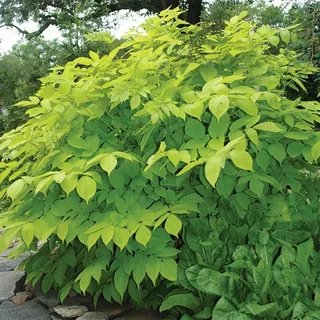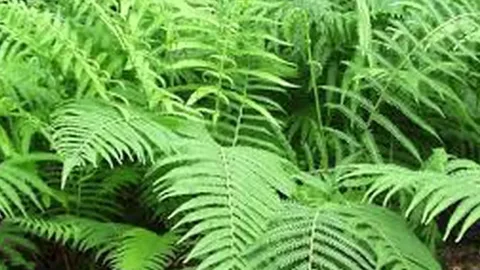Outline
- Introduction
- Why pick coloration plants?
- Challenges with shady gardens.
- What you may get from this guide.
- Understanding Shade in the Garden
- Full coloration vs. Partial color.
- How much mild colour vegetation really need.
- Top Sun Shade Plants for UK Gardens
- Best Plants for Full Shade: Ferns, Hostas, English Ivy, and more.
- Best Plants for Partial Shade: Astilbe, Hydrangeas, Foxglove, and others.
- Low-Maintenance Choices: Plants for smooth care and less art work.
- Tips for Thriving Shade Plants
- Soil and Watering Tips.
- Common Problems and Fixes.
- FAQs
- Quick solutions to well-known questions.
- Conclusion
- Key takeaways.
- Final mind.
Introduction: Why Sun Shade Plants Matter
Shade in a lawn can experience like a trouble, but it’d now not should be. Many gardeners wonder what to plant in shady areas beneath wood, along fences, or beside partitions.
Shade can appear problematic, specifically even as flowers need sunlight to develop, proper? But right here’s the coolest data: positive plant life thrive in low mild. These are “solar shade flowers,” and they’re best for places that get tons less sun.
This guide will assist you choose out the exceptional solar coloration flowers, understand their care, and flip any shaded place into a lush, green spot.
Understanding Shade within the Garden

Before choosing flowers, permit’s quickly have a take a look at shade kinds. Knowing the distinction will assist you choose vegetation with the intention to thrive.
Full Shade vs. Partial Shade
- Full Shade: Areas that get little to no direct daytime. These spots may additionally moreover have dappled slight however no sturdy solar, like under timber, along the north element of buildings, or in deep lawn corners.
- Partial Shade: Areas that get maintain of some hours of daytime every day, usually inside the morning or overdue afternoon. Spots with partial coloration provide filtered or oblique mild.
How Much Light Do Shade Plants Need?
Even colour plants need some slight. Full color vegetation usually opt for indirect or dappled sunlight. Partial shade vegetation can address some hours of moderate, direct sun, however they’re happiest in filtered slight.
Top Sun Shade Plants for UK Gardens
Here are the high-quality solar coloration flora to take into account for UK gardens, cut up into complete shade, partial shade, and coffee-protection alternatives.
Best Plants for Full Shade
If you have were given sincerely shaded spots, those flowers can carry lifestyles and colour to even the darkest garden corners:
- Ferns
- Why Choose Them: Ferns are low-safety and upload lush, gentle greenery.
- Top Varieties: Lady Fern, Hart’s Tongue Fern, and Ostrich Fern.
- Care Tips: Keep soil wet and mulch to keep water.
- Hostas
- Why Choose Them: Known for his or her large, placing leaves.
- Top Varieties: Patriot, Frances Williams, and Blue Mouse Ears.
- Care Tips: Watch for slugs; they love Hostas. Use gravel or sand across the base to discourage pests.
- English Ivy
- Why Choose It: Hardy, evergreen, and top notch for floor cover.
- Care Tips: Minimal maintenance wanted, but prune returned as it may unfold quickly.
- Lungwort (Pulmonaria)
- Why Choose It: Bright blue vegetation in early spring and noticed leaves upload seen hobby.
- Care Tips: Keep soil moist and shaded to save you wilting.
Best Plants for Partial Shade
These plants want a bit greater moderate and art work nicely in areas that get morning sun or dappled light:
- Astilbe
- Why Choose It: Feathery blooms and attractive foliage.
- Top Varieties: Fanal, Deutschland, and Bridal Veil.
- Care Tips: Needs steady moisture. Mulch to keep water.
- Hydrangeas
- Why Choose Them: Big, showy vegetation that bloom from summer season to autumn.
- Top Varieties: Annabelle (for massive, white blooms), Nikko Blue, and Limelight.
- Care Tips: Prune in overdue wintry climate and water often.
- Foxglove (Digitalis)
- Why Choose It: Tall spikes of red, crimson, or white vegetation.
- Top Varieties: Camelot, Dalmatian, and Strawberry Foxglove.
- Care Tips: Grows first-class in wealthy soil. Be careful; it’s poisonous if ingested.
- Coral Bells (Heuchera)
- Why Choose It: Colourful leaves add a pop of pink, purple, or green.
- Top Varieties: Palace Purple, Lime Rickey, and Fire Alarm.
- Care Tips: Tolerates severa soils; prefers a few morning mild.
Low-Maintenance Sun Shade Plants
Want flowers that thrive in colour with minimal fuss? Try those alternatives:
- Japanese Forest Grass (Hakonechloa)
- Why Choose It: Adds a grassy, flowing look with brilliant yellow-green shade.
- Care Tips: Minimal care, just water once in a while inside the direction of dry spells.
- Bergenia (Elephant’s Ears)
- Why Choose It: Big, waxy leaves and overdue wintry climate blooms.
- Care Tips: Low water wishes, however a chunk of shade continues it happy.
- Dead Nettle (Lamium)
- Why Choose It: Low-growing and colorful, nice for ground cowl.
- Care Tips: Thrives in wet, shaded spots. Trim after flowering.
Tips for Thriving Shade Plants
Shade plant life are hardy but require a few take care of the first-class consequences. Here are simple pointers to maintain them healthy and happy.
Soil and Watering Tips
- Soil Quality: Shade vegetation frequently choose nicely-draining soil rich in organic depend. Compost or leaf mould improves soil first rate.
- Watering Needs: Shaded areas can preserve moisture, however some spots might also stay too wet. Water as wished, however don’t overdo it. If your soil is sincerely too damp, try including sand or grit for higher drainage.
- Mulching: A layer of mulch enables shade plants maintain moisture and reduces weeds.
Common Problems and Quick Fixes
Even coloration vegetation can face challenges. Here’s what to look out for and the way to address it:
- Yellowing Leaves: This regularly manner an excessive amount of water. Check drainage and decrease watering.
- Leggy Growth: Plants stretching for slight would possibly want a piece more solar. Move them to an opening with a chunk greater moderate if feasible.
- Pest Issues: Slugs and snails love damp, shaded regions. Place a barrier of gravel or sand spherical flora, or use pet-secure slug repellents.
FAQs

Here are answers to common questions about sun colour plant life:
- Which plants need the least sun?
- Ferns, Hostas, and English Ivy are pinnacle options for low-moderate spots.
- Can I plant colour plants beneath bushes?
- Yes, however maintain in mind that tree roots compete for water. Mulching permits preserve moisture in the soil.
- How do I help colour flora grow quicker?
- Add natural rely to the soil, water frequently, and fertilize in spring for a growth growth.
- Are shade flowers low-preservation?
- Many colour vegetation are low-protection. Just pick hardy kinds like ferns and ivies for the perfect care.
Conclusion: Making Shady Spots Shine
Shade doesn’t should be a problem within the lawn. By deciding on the proper plant life and knowing a manner to attend to them, you can create a lush, green space even in low mild.
Whether you’re after the plush look of ferns, the big blooms of hydrangeas, or the smooth care of English Ivy, there’s a solar colour plant for each want. Just bear in thoughts:
- Pick vegetation based totally on your shade kind: full or partial.
- Prepare the soil with organic rely and mulch.
- Water as desired and appearance beforehand to common problems.
With the right selections, your shady spots can be as colourful as the sunniest spots to your lawn. So circulate in advance, choose out a few solar colour plants, and flip those shadowy spaces into some thing unique!
